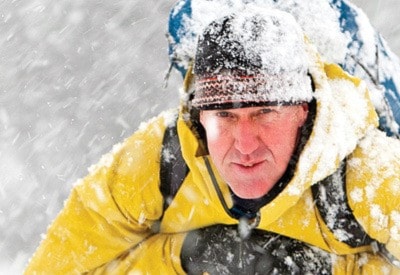The avalanche risk on Vancouver Island is considerable right now and the forecast of more wind and rain isn’t helping the situation.
The snow experts who update the Vancouver Island Avalanche Bulletin are warning outdoor enthusiasts not to be fooled by the intermittent sunny breaks. Lead forecaster for the Vancouver Island Avalanche Centre Jan Neuspiel said there are a series of fast moving storm fronts in the region creating unstable snow conditions in the mountains. He said people who like to play in the back country need to be smart about their activities in light of the recent avalanche danger. Neuspiel who also operates Island Alpine Guides said snowmobilers and people who duck the boundary ropes and gates need to be equipped with the proper gear and knowledge particularly since the avalanche risk is currently high.
A high rating means natural and human triggered avalanches are likely and travel in avalanche terrain is not recommended. Extreme means widespread natural or human triggered avalanches are certain and travel in avalanche terrain should be avoided. Neuspiel said skiers and riders who stay inbounds on Mount Washington don’t need to be concerned because avalanches are controlled by the ski patrol with ski cutting and explosives and it is very rare to have an avalanche in a patrolled area.
Neuspiel pointed to a natural avalanche that happened outside of the patrolled area on the back side of Mount Washington last year at Christmas.
He said it was a size three avalanche that was powerful enough to take out old growth trees.
“It was an historical once in a hundred year event that happened overnight. There was a raging storm with high winds,” he recalled, admitting if the slide had occurred during the day you would have been able to hear it roaring down the mountain.
He reiterated it is the back country recreationists who need to be diligent and read the bulletins at the Vancouver Island Avalanche Centre. He said to be safe it means staying out of avalanche terrain during times of considerable and high hazard ratings and if you don’t know what avalanche terrain is, take an avalanche course to learn to distinguish avalanche terrain.
“They really should take an avalanche course. Even a two day course is helpful,” said Neuspiel.
Safety gear is also essential and according the the Canadian Avalanche Centre (CAC) a disturbing number of people haven’t gotten the message about the gear it considers mandatory. For example the CAC reports that 30 per cent of snowmobile accidents involve teams lacking appropriate gear. However, gear alone isn’t enough — you also need to know how to use it.
According to the CAC there are approximately 150 avalanche fatalities reported every year by the 17 countries that are members of the International Commission for Alpine Rescue (ICAR). In the past 30 years, an average of 11 avalanche fatalities have occurred per year in Canada and there is a definite trend in Canadian avalanche incidents in terms of fatalities, gender, location and other factors. Snowmobiling in the back country is the activity that results in most avalanche fatalities.
The profile of a typical avalanche victim and the circumstances during which the incident occurred include: a male in his 20s, a back country skier with a 73 per cent chance of being killed during the months of January, February and March by triggering an avalanche while on foot (55%) or snowmobile (32%).
There are common mistakes backcountry recreationists make that put them at increased riskt. They include poor trip preparation, lack of knowledge of recognizing avalanche terrain, inability to assess snow stability and unskilled back country search and rescue techniques
The basics, however, can be learned through avalanche awareness courses or by traveling with experienced people, and then refined over successive winters.
Information on courses and current conditions can be found online at www.islandavalanchebulletin.com. The bulletin covers the mountainous region of Vancouver Island from the Mt. Cain Ski Area in the North to the Beaufort range to the South including the mountains of Strathcona Provincial Park.
reporter@pqbnews.com
